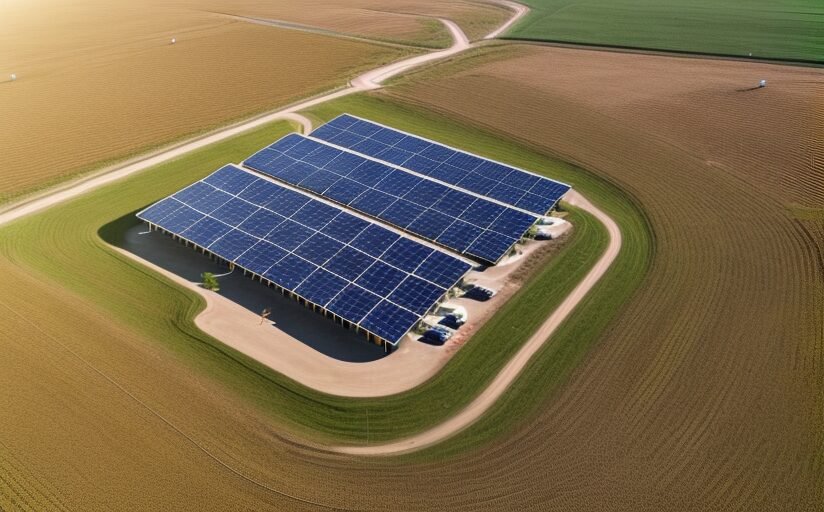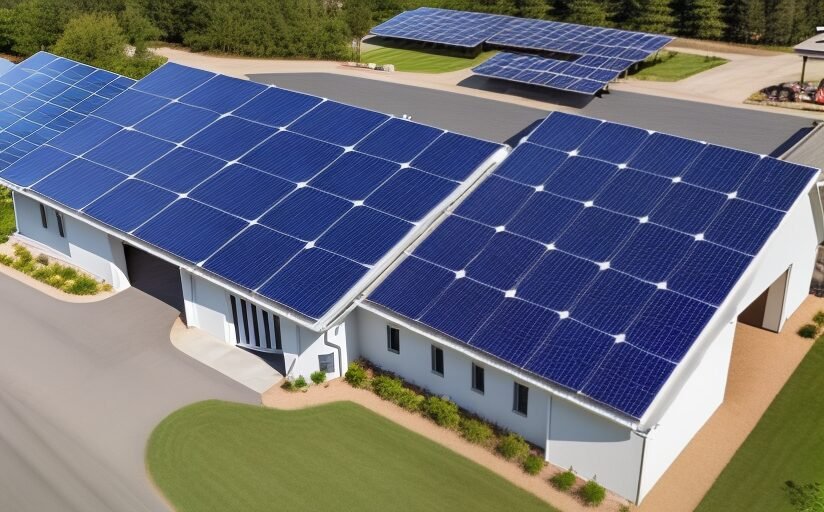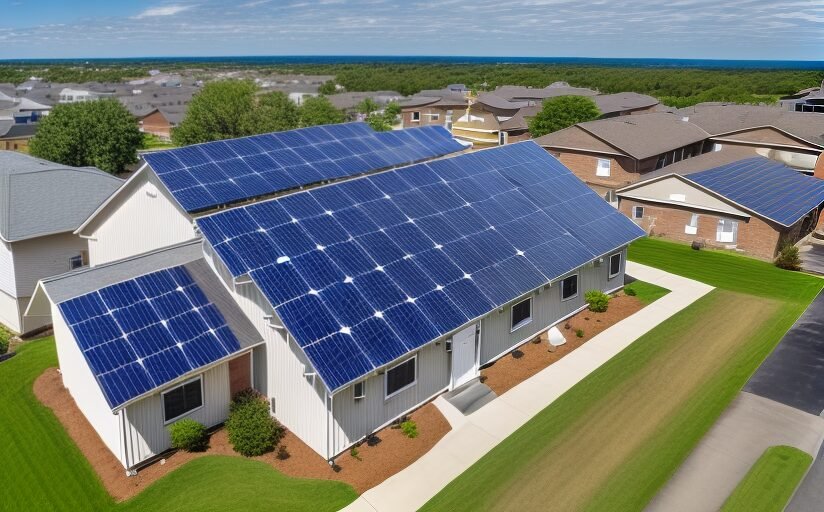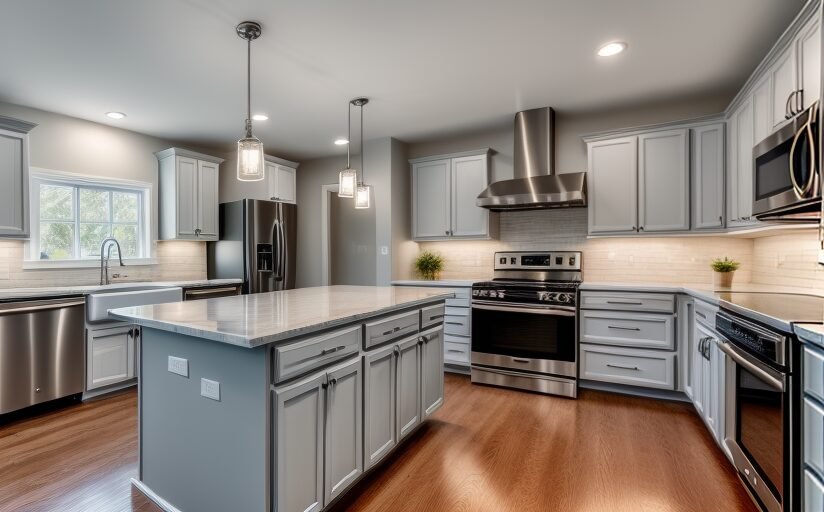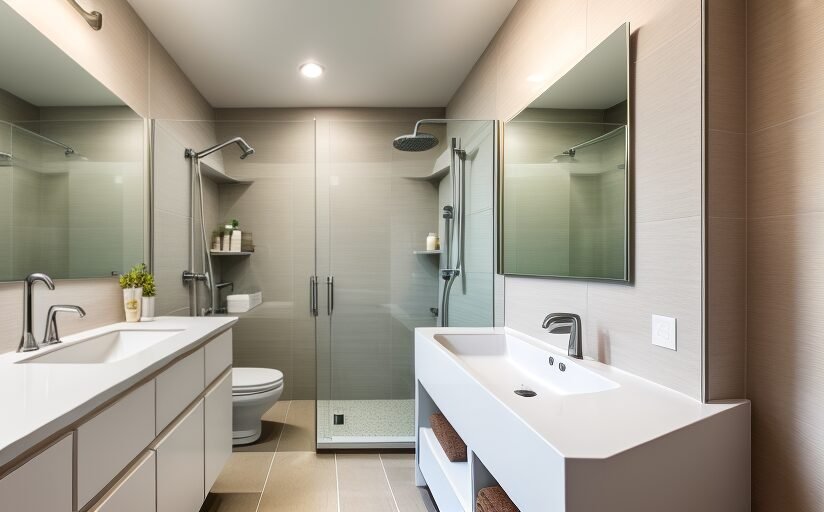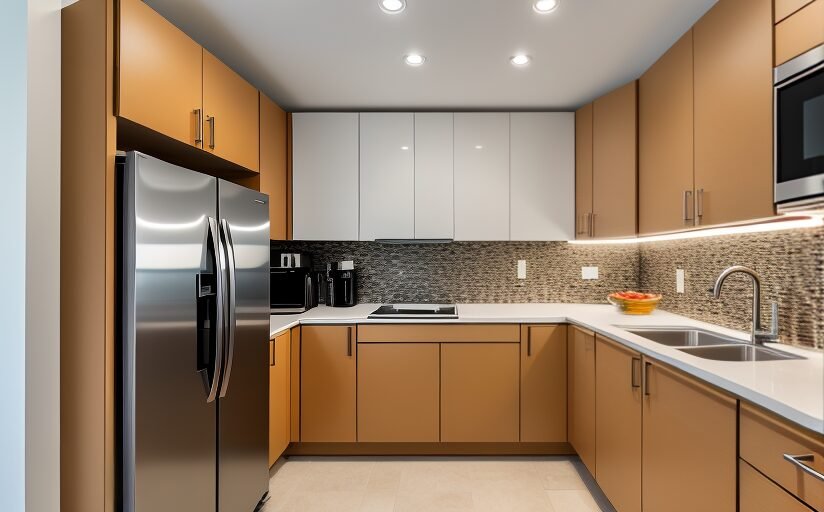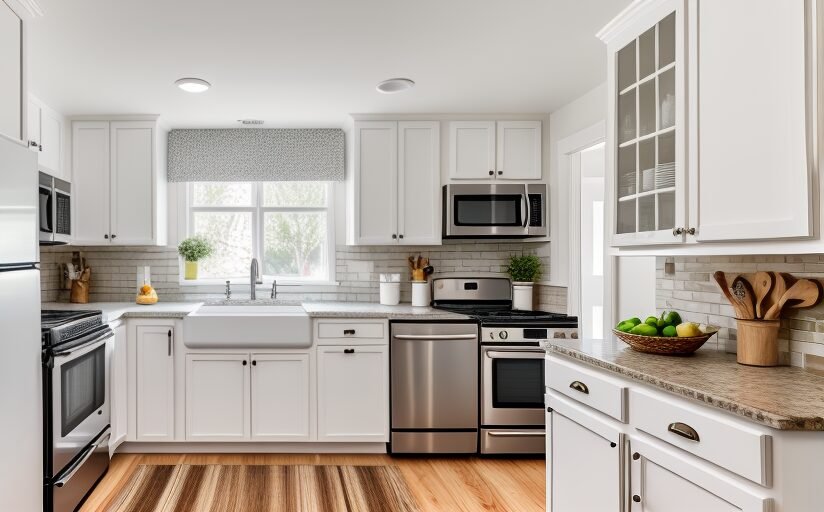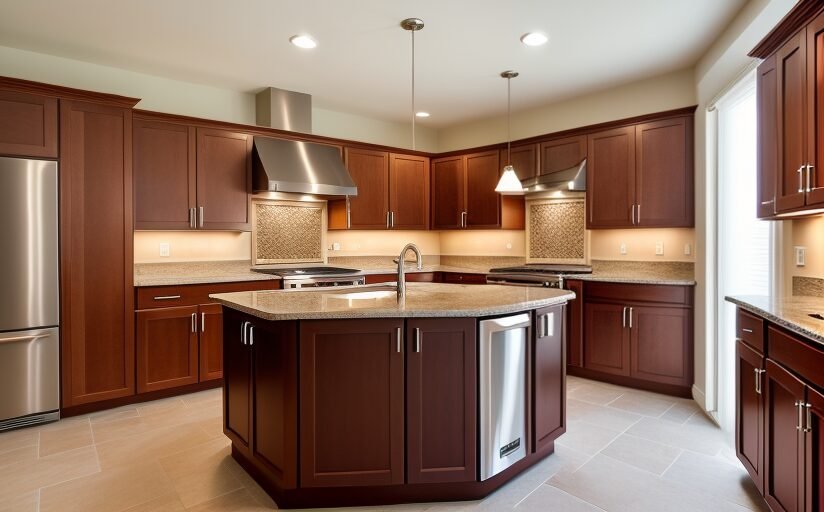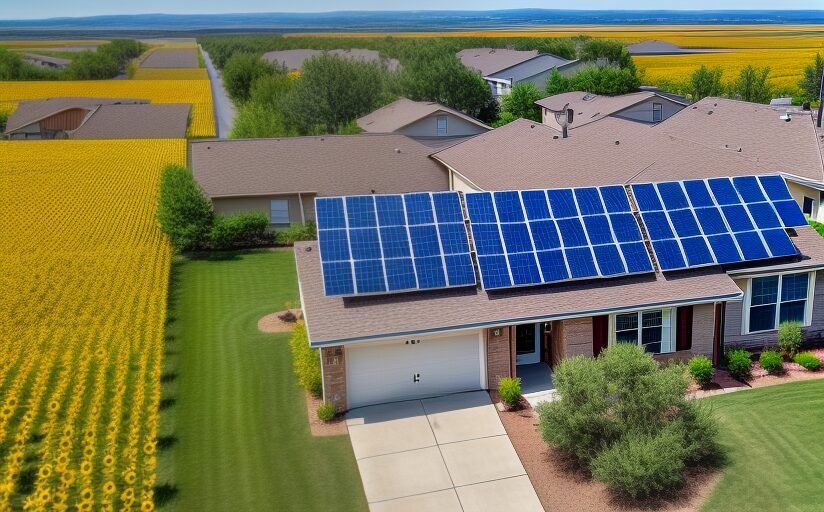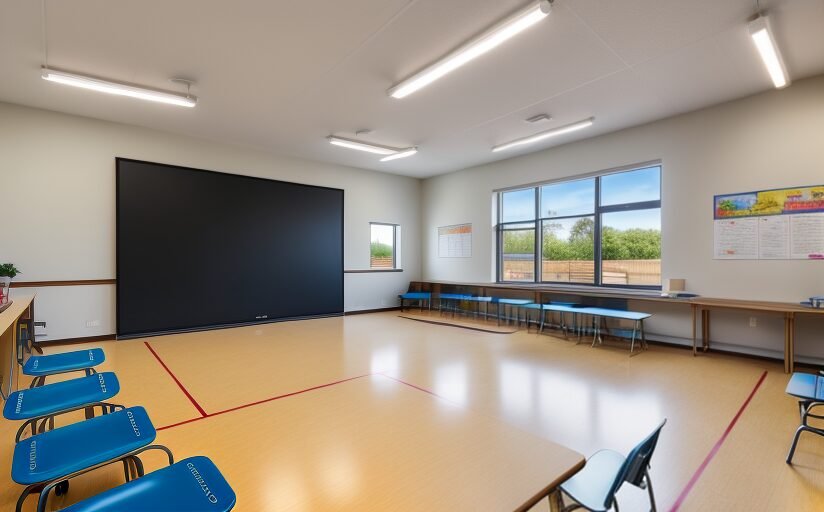Secure Your Home Today – Top Home Security Tips
Ensuring the safety and security of your home and loved ones is a top priority for any homeowner. With the rising instances of break-ins and burglaries, it’s essential to take proactive measures to secure your property. In this section, we will provide you with the top home security tips to keep your property safe from intruders.

Key Takeaways:
- Assess your current security measures
- Reinforce your entry points
- Install a home security system
- Enhance outdoor lighting
- Secure your home’s perimeter
Evaluate Your Existing Security Measures
Before making any changes to your home security setup, it’s crucial to take stock of your existing security measures. Conducting a thorough evaluation will allow you to identify areas where improvements can be made to enhance the safety of your household.
Assess Your Doors and Windows
Start by inspecting your doors and windows, as they are the most common entry points for burglars. Check for any signs of wear and tear, such as damaged locks or hinges, and make a note of any areas where the entry points could be reinforced.
Consider Your Alarm System
If you already have an alarm system in place, evaluate its effectiveness in monitoring your home’s security. Are the sensors properly positioned, and are they functioning correctly? If your system does not include a monitoring service, consider upgrading to one that provides 24-hour monitoring for added protection.
Analyze Your Home’s Lighting
Assess the outdoor lighting of your home, particularly around entrances and potential entry points. Ensure that all bulbs are working correctly, and consider adding motion sensor lights as a deterrent to intruders.
Survey Your Property
Look at the overall layout of your property, including the surrounding area. Evaluate your property’s boundaries, and consider adding fencing or landscaping to enhance privacy and deter unauthorized access to your property.
Consider Professional Assistance
If you’re having trouble evaluating your existing security measures, consider enlisting the help of a professional security company for expert guidance. They can perform an assessment of your property and provide recommendations for improving your home security system.
Reinforce Your Entry Points
Your doors and windows are the primary entry points for potential burglars. Therefore, it’s crucial to ensure that they are properly reinforced to make entry more difficult for intruders. One effective method to reinforce your entry points is to upgrade your locks. Deadbolts are one of the most common options for secure locks and are an excellent choice to prevent forced entry.
Types of Deadbolts
| Deadbolt Type | Description |
|---|---|
| Single Cylinder Deadbolts | These deadbolts have a keyhole on the outside and a thumb turn on the inside. They are straightforward to operate and are suitable for most homes. |
| Double Cylinder Deadbolts | These deadbolts require a key to open from both the inside and outside of the door. They are suitable for doors with glass panes or near windows to prevent intruders from breaking the glass and reaching inside to unlock the door. |
Another effective solution to reinforce your entry points is to install security film on your windows. This film adds an extra layer of protection and makes it more challenging for intruders to break into your home. Additionally, reinforcing your door frame with a metal frame reinforcement kit can prevent a burglar from kicking in your door.
Installing a security system that includes sensors on entry points is another useful approach to secure your home’s entry points. When an intruder tries to open a door or window with sensors, it triggers the alarm, alerting you and law enforcement. Smart locks offer an extra layer of security, allowing you to control your locks from anywhere through an app on your smartphone and providing real-time notifications of any activity.
In summary, reinforcing your entry points is crucial to enhance your home’s security. By upgrading your locks, installing security film on your windows, and adding a security system, you can discourage potential intruders and secure your home more effectively.
Install a Home Security System
Installing a home security system is a vital step in safeguarding your property. With numerous options available, it’s essential to choose a system that meets your specific needs. Here are some essential installation tips to consider:
- Choose the right system: Opt for a security system that comes equipped with the latest technology. These can include video surveillance, motion sensors, and alarms that deliver alerts directly to your phone.
- Survey your property: Identify the most vulnerable areas of your home, like entry doors and first-floor windows. Ensure that your system covers these areas.
- Place cameras strategically: Position cameras in areas that are easily visible to deter potential intruders. Ensure that the cameras provide clear visuals and operate effectively in low-light conditions.
- Install the system properly: Follow the manufacturer’s instructions to install the system correctly. Test the system to ensure that it functions correctly before arming it.
- Regular maintenance: Keep your security system in good working order by performing regular maintenance checks. Replace any dead batteries or malfunctioning components immediately to ensure proper operation.
By following these essential installation tips, you can enjoy the peace of mind that comes with knowing your home is secure.
Enhance Outdoor Lighting
Adequate outdoor lighting is crucial for home security, particularly at night when visibility is limited. Proper lighting can deter potential intruders, and ensure that your property is easily identifiable.
When considering outdoor lighting, focus on areas that are strategically located around your property, including entry points, pathways, and driveways. Installing motion sensor lights is an excellent option, as it can trigger when it detects movement. Furthermore, it can save energy, as it will only turn on when needed.
Another option is to install garden lights, which is an attractive way to illuminate your yard while also promoting home security. These lights often have solar options, which save energy and are environmentally friendly.
By enhancing outdoor lighting through strategically placed lighting fixtures, you can help prevent potential break-ins and burglaries, and make your home a safer place to live.
Secure Your Home’s Perimeter
One effective way to discourage unwanted visitors is by securing the perimeter of your property beyond your home’s core security measures. Consider installing a fence or gate around your property to restrict access points. Landscaping can also serve as a barrier and signal that the property is private.
When choosing fencing and gates, consider materials that are sturdy, difficult to climb, and can withstand various weather conditions. Additionally, make sure they are installed with secure hardware such as latches and locks that are resistant to forced entry.
Landscaping Strategies
Strategic landscaping can be an effective way to enhance your home perimeter security. Consider planting thorny bushes or tall shrubs along the property boundaries to create an added layer of defense. This can serve as a visual deterrent to would-be burglars and make it more difficult to access your property.
Alternatively, you can install motion-activated lights or security cameras to monitor the perimeter of your property. This not only deters intruders but also provides additional footage for investigating any potential incidents.
Use Smart Technology for Added Protection
In today’s digital age, smart technology has become an integral part of our lives. When it comes to home security, smart devices and home automation systems can provide an extra layer of protection.
Smart home security systems utilize advanced technology, such as motion detectors and security cameras, to monitor your home and alert you to potential threats. With remote monitoring capabilities, you can keep an eye on your home from anywhere, at any time.
In addition to security systems, home automation technology can also enhance your home’s safety. Smart locks, for example, allow you to control access to your home remotely, while smart lighting systems can be programmed to turn on and off at specific times, giving the impression that someone is home even when you’re away.
By incorporating smart technology into your home security setup, you can enjoy peace of mind knowing that your home is protected around the clock, whether you’re at home or away.
Create a Strong Neighborhood Watch Program for Community Security
Crime prevention is not only limited to individual households but can also be accomplished through strong community involvement. Creating a neighborhood watch can be an effective way to deter crime and enhance the safety of your community.
The concept of a neighborhood watch is simple: neighbors voluntarily form a group to keep an eye out for suspicious activity and report it to the authorities. This program has proven to be successful in reducing crime, increasing community vigilance, and fostering a sense of unity.
If you’re interested in starting a neighborhood watch in your area, follow these steps:
- Get to know your neighbors: It’s important to establish trust and rapport with your neighbors before launching any security program. Organize a few social events to break the ice and get to know each other better.
- Recruit volunteers: Talk to your neighbors and identify those who are willing to join the program and commit time to patrol the neighborhood. Aim to have a diverse and representative group of volunteers that includes men and women of different ages and backgrounds.
- Develop a plan: Define the boundaries of your neighborhood watch, establish the patrol hours, and assign tasks to each team member. Develop protocols for how to handle suspicious activity and emergencies.
- Communicate effectively: Use social media, email, or group chats to keep all members informed and coordinated. Encourage everyone to report any suspicious activity to the authorities immediately.
- Stay consistent: Being consistent with your patrols and communication is necessary for the success of the neighborhood watch program. Ensure that everyone is committed and motivated to keeping the community safe.
Remember, community safety is everyone’s responsibility. By creating a neighborhood watch program, you can play an active role in preventing crime and promoting a safer environment for all.
Conclusion
We hope that these tips have provided you with valuable insights on how to secure your home and keep your loved ones safe. Remember, even the smallest steps can make a significant difference in deterring potential intruders and enhancing your overall security setup.
By evaluating your existing security measures, reinforcing your entry points, installing a home security system, enhancing outdoor lighting, securing your home’s perimeter, embracing smart technology, and building a strong sense of community through a neighborhood watch program, you can create a robust and well-rounded security plan for your property.
Don’t wait until it’s too late to take action. Implement these tips today and enjoy the peace of mind that comes with knowing your home is secure.
FAQ
What are some top home security tips to secure your home?
There are several essential tips to enhance the security of your home. These include evaluating your existing security measures, reinforcing entry points, installing a home security system, enhancing outdoor lighting, securing your home’s perimeter, using smart technology for added protection, and creating a neighborhood watch program.
How do I evaluate my existing security measures?
To evaluate your existing security measures, start by assessing your doors and windows for weaknesses. Check the quality of locks, consider installing deadbolts, and reinforce frames if necessary. Additionally, review your alarm system and surveillance cameras to ensure they are functioning properly. It may also be beneficial to consult with a professional security expert for a comprehensive assessment.
What can I do to reinforce the entry points of my home?
To reinforce the entry points of your home, consider installing solid core or metal doors, as they are more difficult to break through. Reinforce door frames with security plates and strike plates. Install window security film or laminated glass to make them more resistant to forced entry. Additionally, use window locks and install a sturdy deadbolt lock on every exterior door.
How do I choose and install a home security system?
When selecting a home security system, consider your specific needs and budget. Look for systems that include features like alarms, surveillance cameras, motion sensors, and remote monitoring capabilities. It’s advisable to consult with security professionals or reputable companies to ensure proper installation and setup.
How can I enhance outdoor lighting for better home security?
Effective outdoor lighting can deter potential intruders. Install motion-activated lights around the perimeter of your property, particularly near entry points. Consider using solar-powered lights or LED bulbs for energy efficiency. Ensure all pathways, garages, and dark areas are well-lit. Regularly check and maintain your outdoor lighting to ensure optimal performance.
What are some strategies for securing my home’s perimeter?
Securing your home’s perimeter involves various strategies. Install a sturdy fence around your property, preferably with a locked gate. Trim any bushes or hedges near windows and remove obstructions that could provide cover for intruders. Consider using gravel or landscaping elements that make noise when stepped on near vulnerable areas to alert you to potential trespassers.
How can smart technology enhance home security?
Smart technology offers added protection by allowing you to monitor and control various aspects of your home security remotely. You can integrate smart devices like security cameras, door locks, motion sensors, and alarm systems into a comprehensive home automation system. This enables you to receive real-time alerts, access surveillance footage, and remotely control security features through a smartphone or tablet.
How do I establish a neighborhood watch program?
Creating a neighborhood watch program involves mobilizing your community to work together toward a common goal of safety. Start by reaching out to your neighbors to gauge interest and form a core group. Contact local law enforcement for guidance and support, and schedule regular meetings to discuss security concerns and develop action plans. Raise awareness through signage, social media, and neighborhood events to encourage participation.



